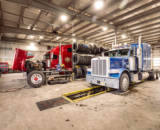NATSO recently prepared a memorandum summarizing the new Environmental Protection Agency’s (EPA) revised Underground Storage Tank Regulations rules for NATSO members.
Several NATSO members have reached out to me as NATSO's Legislative and Regulatory Counsel with questions on the rule. Below is my answer to “Which items in the new UST regulations will be most expensive?”
Answer:
Which items in the new UST regulations will be most expensive will depend upon a number of factors (what type of equipment you have installed, what the status of your state regulations are, etc.) but at a high level, these are the major takeaways from the final rule that we think equipment owners should be aware of:
- Secondary Containment. New and replaced tanks and piping must be secondarily contained with interstitial monitoring systems, and new dispenser systems must be equipped w/ under-dispenser containment. The rule also includes secondary containment testing requirements.
- Walkthrough Inspections. The final rule requires periodic walkthrough inspections to detect releases (for example, must check spill preventing equipment and fill caps every 30 days; must check containment sumps annually) and also includes additional requirements for periodic spill, overfill, and secondary containment monitoring.
- Spill Containment Testing. Spill prevention equipment must be tested every 3 years.
- Overfill Containment Inspections. Ball float valves in vent lines have been eliminated as an option for satisfying overfill prevention requirements for new/replaced flow restrictors.
- Operator Training. Requires owners/operators to designate at least one individual for each of three "classes" of operators, and those operators must be trained in certain areas.
(Obtain a copy of NATSO’s memorandum Environmental Protection Agency’s (EPA) revised Underground Storage Tank Regulations rules for NATSO members here.)
One of NATSO’s primary roles is to deliver solutions to members’ challenges. Each day members tap into the expertise of myself and other NATSO staff members for answers to some of their most pressing questions. If you have questions on the rule, be sure to reach out to me at dfialkov@natso.com or (703) 739-8501 with questions.
This blog post is intended to provide general information and recommendations and should not be considered legal advice. This information may be subject to regulations and restrictions in your state.
Subscribe to Updates
NATSO provides a breadth of information created to strengthen travel plazas’ ability to meet the needs of the travelling public in an age of disruption. This includes knowledge filled blog posts, articles and publications. If you would like to receive a digest of blog post and articles directly in your inbox, please provide your name, email and the frequency of the updates you want to receive the email digest.

